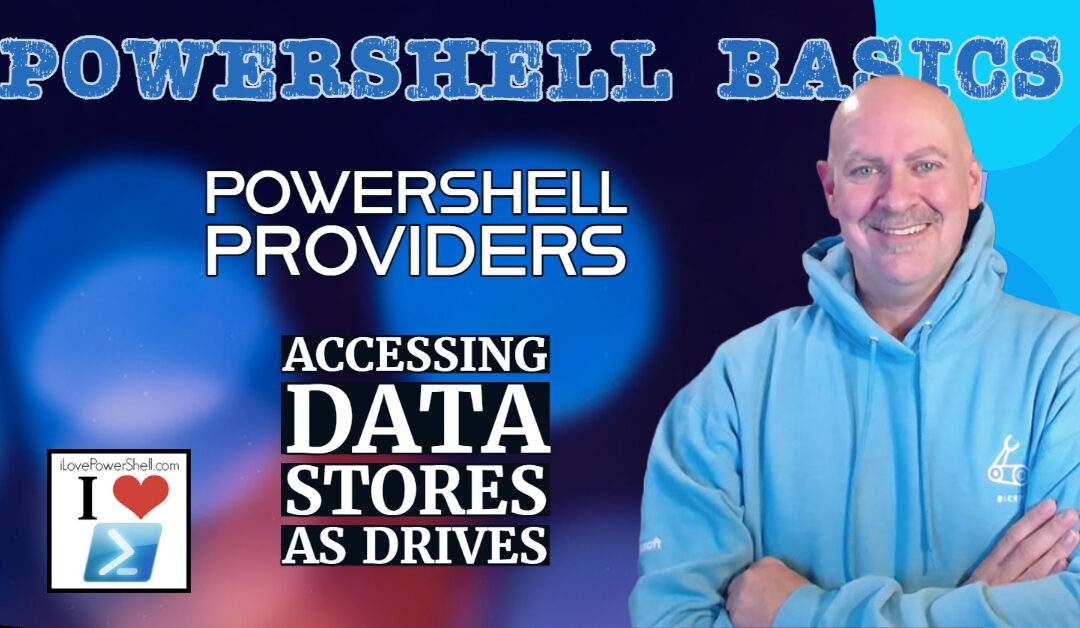PowerShell providers are a way to access data stores, such as the registry or the file system, as if they were drives in the file system. This allows you to use familiar commands, such as cd and dir, to navigate and manage these data stores. In this article, we’ll cover the basics of PowerShell providers and how to use them.
Understanding Providers
PowerShell providers are essentially extensions to the PowerShell engine that allow you to interact with data stores in a more intuitive and user-friendly way. When you use a provider, you can access its data store as if it were a drive in the file system. Providers are exposed as PSDrives, which stand for PowerShell drives. PSDrives are created using the New-PSDrive cmdlet and are then accessed using familiar file system commands such as cd and dir.
Available Providers
PowerShell comes with a number of built-in providers, each of which represents a different data store. Here are some of the most commonly used providers:
FileSystem: Provides access to the file system.Registry: Provides access to the Windows registry.Function: Provides access to PowerShell functions.Alias: Provides access to PowerShell aliases.Environment: Provides access to environment variables.Variable: Provides access to PowerShell variables.
Creating a PSDrive
To use a provider, you first need to create a PSDrive. Here’s the syntax for creating a PSDrive:
New-PSDrive -Name <DriveName> -PSProvider <ProviderName> -Root <Path>
<DriveName>is the name you want to give the PSDrive.<ProviderName>is the name of the provider you want to use.<Path>is the root path for the PSDrive. This is the starting point for the drive.
For example, to create a PSDrive for the registry, you would use the following command:
New-PSDrive -Name HKCU -PSProvider Registry -Root HKEY_CURRENT_USER
This creates a new PSDrive named HKCU that maps to the HKEY_CURRENT_USER key in the registry.
Navigating a PSDrive
Once you’ve created a PSDrive, you can navigate it just like any other drive in the file system. Here are some of the most commonly used commands:
cd: Changes the current location to the specified PSDrive.dir: Lists the items in the current location of the PSDrive.pwd: Displays the current location of the PSDrive.
For example, to navigate to the Software key in the registry, you would use the following commands:
cd HKCU:\Software dir
Accessing Data Store Items
In addition to navigating a PSDrive, you can also use familiar file system commands to access and manage items in the data store. Here are some of the most commonly used commands:
Get-Item: Gets an item in the current location of the PSDrive.New-Item: Creates a new item in the current location of the PSDrive.Remove-Item: Deletes an item in the current location of the PSDrive.Rename-Item: Renames an item in the current location of the PSDrive.
For example, to create a new key in the Software key in the registry, you would use the following command:
New-Item -Path HKCU:\Software\MyApp
This creates a new key named MyApp under the Software key in the registry.
Accessing providers as drives
Once a provider is registered, we can access it as if it were a drive. A drive is nothing more than a logical representation of a location in the file system. We can use the New-PSDrive cmdlet to create a new drive to a provider.
For example, to create a new drive to the registry provider, we can run:
New-PSDrive -Name HKCU -PSProvider Registry -Root HKEY_CURRENT_USER
This will create a new drive named HKCU that represents the HKEY_CURRENT_USER registry key.
We can then use standard PowerShell commands, such as cd and dir, to navigate and view the contents of the registry key:
cd HKCU:\Software dir
Similarly, we can create a drive to the Cert: provider to view the certificates installed on the system:
New-PSDrive -Name Cert -PSProvider Cert:\ -Root CurrentUser
This will create a new drive named Cert that represents the user certificate store.
We can then navigate to this location and view the certificates:
cd Cert: dir
Conclusion
PowerShell providers allow us to access a variety of data stores as if they were part of the file system. This provides a consistent way to interact with various data sources, such as the registry and certificates, and makes it easy to incorporate them into scripts and automation tasks. By understanding how to work with providers, we can take full advantage of the capabilities of PowerShell and become more effective administrators and developers.


